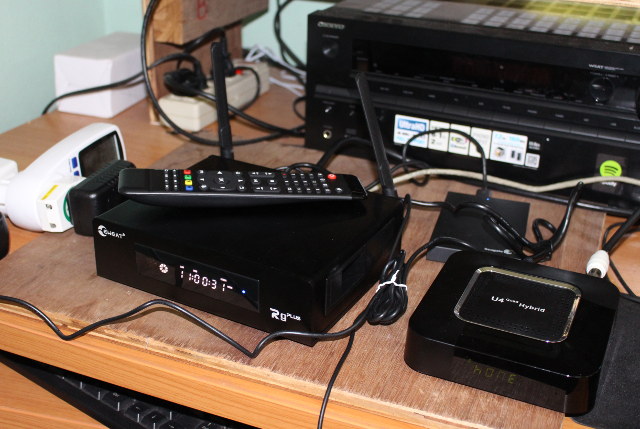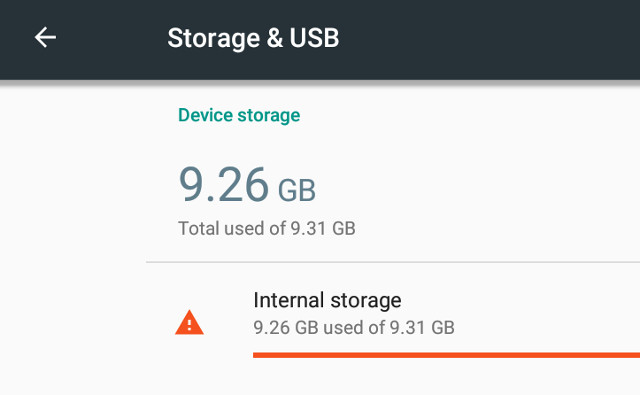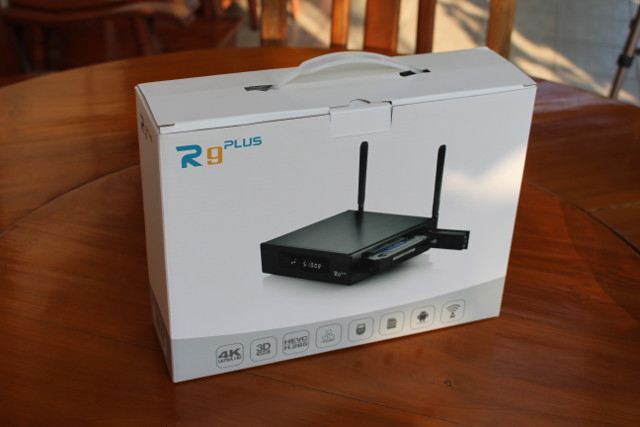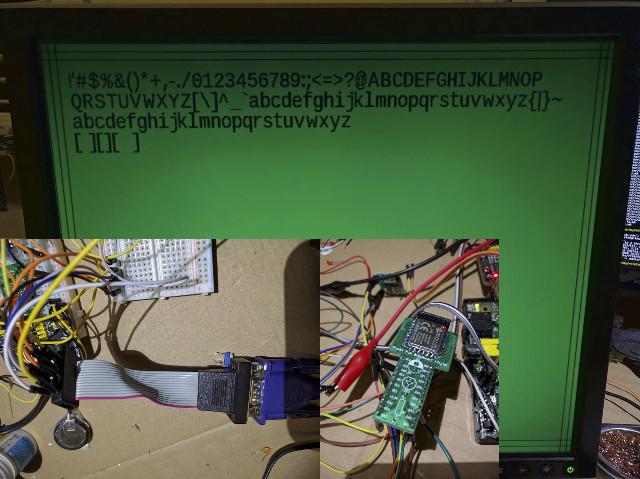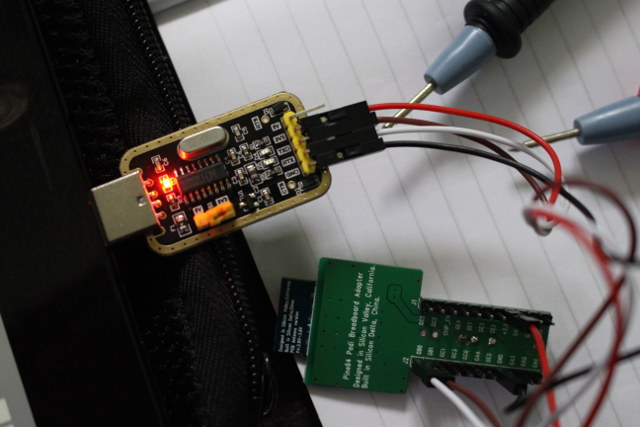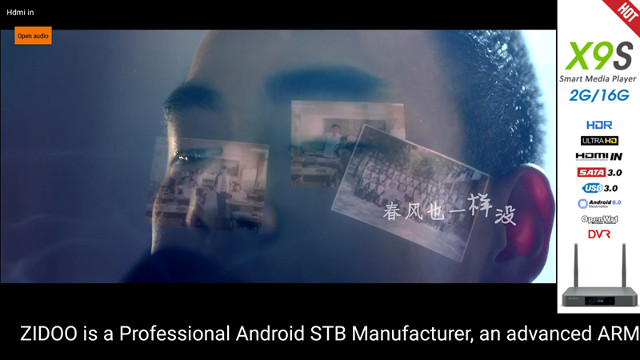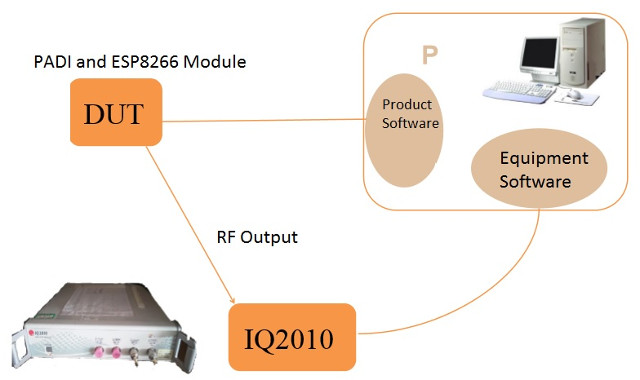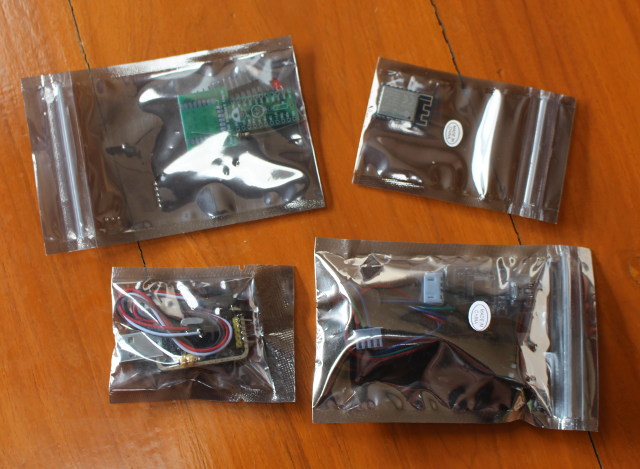Eweat R9 Plus is a device powered by Realtek RTD1295 SoC combining main functions: Android 6.0 TV box, OpenWrt NAS/router, and HDMI recorder thanks to its HDMI input port. It competes directly with Zidoo X9S which has the same features, except while Zidoo X9S has no internal SATA bay and your 2.5″ hard drive just hang outside the box, Eweat R9 Plus comes with an internal 3.5″ SATA bay that makes it much neater on your furniture… We’ve already seen that in the first part for review “Eweat R9 Plus unboxing and teardown“, and I was impressed by the hardware, but the software is even more important, and that’s what I’m going to check out in the second and final part of this review. First Boot, First Impressions and Setup. I’ve first inserted a 1TB 3.5″ SATA drive in the device, and then I connected an extra USB 3.0 hard […]
Something is “Eating” my Android TV Box Internal Storage!
No, it’s not a joke. I’ve been playing for a while with Eweat R9 Plus Android TV box after inserting a 1TB hard drive in the SATA bay, but while in most other reviews, the apps and files used for testing are just taking around 3 GB, the 9.31 GB storage in that device was completely full, and I have yet to install some apps, and copy some files part of my testing procedure… I did not immediately find out about the “storage full” issue, as I first I just noticed Kodi would not start anywhere, and the default video app would just reboot after adjusting the volume… But let’s check what takes all that space… I had to uninstall 3Dmark in order to be able to take screenshots, which explains why I have a bit more space now, but the system reports all that space (and more???) is taken […]
Eweat R9 Plus Android TV Box and OpenWrt NAS Review – Part 1: Unboxing and Teardown
Zidoo X9S is getting some competition with Eweat R9 TV boxes based on the same Realtek RTD1295 processor with built-in SATA, Gigabit Ethernet, 4K VP9 and H.265, HDR, and USB 3.0. The company has three R9 models, and they sent me to top of the line R9 Plus with 2GB RAM, 16GB storage, a 3.5″ SATA bay, HDMI input, and dual Gigabit Ethernet ports for evaluation. I’ll start the first part of the review by checking out the hardware inside and out, before testing the firmware in the second part. Eweat R9 Plus Unboxing The device ships in a large package with a handle which can be convenient in brick and mortar shops since the whole package weights about 1.8 kilograms.The package then contains a smaller package will all accessories: a 12V/2.5A power supply, a “Quickly User Guide” (sic.), a HDMI cable, and an IR remote control taking two AAA […]
VGA Output Hack on $2 PADI IoT Stamp & Other Realtek RTL8710AF Modules
It’s pretty amazing what you can do with those cheap WiFi modules coming from Espressif and Realtek. You may remember CNLohr getting ESP8266 to broadcast video to your TV though NTSC, and that was impressive. But developer kissste, who has been very active since the announcement of a $2 Realtek RTL8710 module, has now developed a VGA driver demo for Realtek Ameba WiFi SoCs, and successfully tested it on Pine64 PADI IoT Stamp. Just like on ESP8266, there’s no hardware display block on RTL8710AF, RTL8711AF, and RTL8195AF SoCs, so instead he had to connect the signals to GPIOs with the video signal connected to GA1 via a resistor, H-Sync to GC2, and V-Sync to GA5. Video and H-Sync data is actually transfered over an SPI connection using DMA transfer for better performance. Normally the video signal for VGA is divided into red, green, and blue signal, so I understand he mixed […]
Getting Started with Pine64 PADI IoT Stamp – Part 2: Serial Console, GCC SDK, Flashing & Debugging Code
PADI IoT Stamp module powered by Realtek RTL8710AF ARM Cortex M3 WiFi SoC is a potential competitor to Espressif ESP8266 modules. Pine64, the manufacturer of the module, sent me their kit with a $2 IoT stamp, a breakout board, a USB to TTL debug board and a J-Link debug board. In the first part of the review I’ve shown the hardware and how to assemble PADI IoT stamp kit. In the second part I’m going to write a tutorial / getting start guide showing how to control the board with AT commands, build the firmware with GCC SDK, and finally demonstrate how to flash and debug the firmware with the J-Link debugger. The Quick Start Guide indicates you need to connect the USB to TTL debug board to UART2 instead of UART1 as I did on the very similar B&T RTL-00 RTL8710AF module, and set connection settings to 38400 8N1. […]
Zidoo Releases Digital Signage SDK for X8 and X9S Android TV Boxes
Zidoo X9S and X8 are Android 6.0 + OpenWrt TV boxes powered by Realtek RTD1295 processor with HDMI input supporting PIP, UDP broadcasting and video recording, which works reasonably well despite some 4K video decoding limitations. The company has now released a “digital signage SDK” – which I’d rather just call a digital signage demo – working on either device on github, but you can still study the source code in order to build your own. Some of the possible features showcased in the demo include: Digital Signage (AD) player as shown above with video, picture and scrolling text Multi Views display (HDMI IN + Video playing + Web browsing) Multi Videos decode Screen rotation Screen zoom in / out Display output resolution switch HDMI IN player HDMI IN picture in picture (PIP) So it’s not a total solution, just an “SDK” showing what can be done with media files, and you’d still have to write your own app managing content updates (from storage or network), as well as some content management software. Two apks are used: […]
Realtek RTL8710AF (PADI IoT Stamp) vs Espressif ESP8266 (ESP-07) WiFi RF Performance Comparison
After I posted about PADI IoT Stamp IoT kit based on RTL8710AF ARM Cortex M3 WiSoC yesterday, I was soon asked whether I could compare the RF performance against ESP8266 modules like ESP-12. I don’t have any equipment to do this kind of test, except for some simple test like testing range with WiFi Analyzer app, but I remember Pine64 told me they had some comparison data a little while, and accepted to share their results. The test setup is comprised of Litepint IQ2010 multi-communication connectivity test system and PC software, as well as the device under test (DUT) with PADI IoT Stamp (version with u.FL antenna connector) and ESP-07 ESP8266 module as a u.FL connector is required to connect the test system. They’ve tested 802.11b, 802.11g, and 802.11n, but for IoT projects 802.11b is the most important as usually long range is more important than data rate. Test results […]
Pine64 PADI IoT Stamp WiFi IoT Kit Review – Part 1: Hardware, Debuggers, and Soldering
Back in September, Pine64 unveiled their $2 PADI IoT Stamp based on Realtek RTL8710 ARM Cortex M3 WiFi SoC aiming to compete with Expressif ESP8266 solutions. The company has now sent me their complete kit for review, which beside the module itself includes a breakout board kit, and some hardware debug tools. In the first part of the review, I’ll check out the hardware, and solder the kit. I received a package with four antistatic bags. From top left to bottom right, we have PADI IoT Stamp, JLINK-OB debugger based on an STM32 MCU with some jumper wires (aka Dupont cables) for SWD signals, and a USB cable to your computer in order to flash the firmware or do some bare metal programming, a breakout board kit including two headers, a RED LED, and a resistor, and finally a USB to Serial board based on CH340G with 4 jumper wires […]


